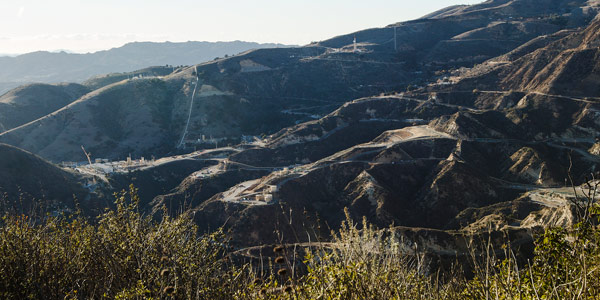By Hudson Sangree
FERC last week approved the extension of most of CAISO’s proposals to address reliability concerns posed by the Aliso Canyon natural gas storage facility, whose capacity has been limited since a massive methane leak in 2015.
The commission’s Nov. 26 order approved extension of six of the seven Tariff provisions, rejecting the continuation of gas price scalars used to calculate commitment cost caps and default energy bids for generators served by Southern California Gas and San Diego Gas & Electric (ER18-2520).
CAISO asked FERC in September for expedited approval to renew Tariff provisions first put in place in June 2016 and subsequently refined and extended. CAISO’s most recent update, called Phase 4, proposed extending the temporary provisions for another year beyond their expiration dates of Nov. 30 and Dec. 16, 2018. (See CAISO Seeks to Extend Aliso Canyon Rules.)
The provisions include a measure allowing the ISO to enforce constraints on the maximum amount of natural gas that can be burned by generators served by the two gas providers. The constraints were based on limited supply anticipated by CAISO during specific hours.
The provisions also allow CAISO to suspend or limit the ability of scheduling coordinators to submit virtual bids if it’s determined virtual bidding could undermine reliability or grid operations.
The ISO’s Department of Market Monitoring did not support the extension of the price scalars, arguing that they have not been useful tools for managing high prices.
FERC agreed, writing that “CAISO’s use of the gas price scalars over the past year were not effective and adversely affected the market through weakened market power mitigation and increased bid cost recovery for the period that they were active.
“We find DMM’s analysis regarding the market impacts of the gas price scalars to be persuasive,” the commission said, declining to extend the provision.
The damage to Aliso Canyon, once the state’s largest natural gas reservoir, poses challenges to generators and regulators alike.
Despite objections from local residents and Los Angeles County officials, SoCalGas resumed injections into the facility in July 2017 to comply with a state directive to maintain sufficient gas inventories to support gas and electric reliability. (See Aliso Canyon Resumes Injections.)
The California Public Utilities Commission in May authorized a temporary increase in the volume of injections to support summer grid operations but maintained a policy of allowing withdrawals only as a last resort. (See CPUC OKs Temporary Increase in Aliso Canyon Injections.)



